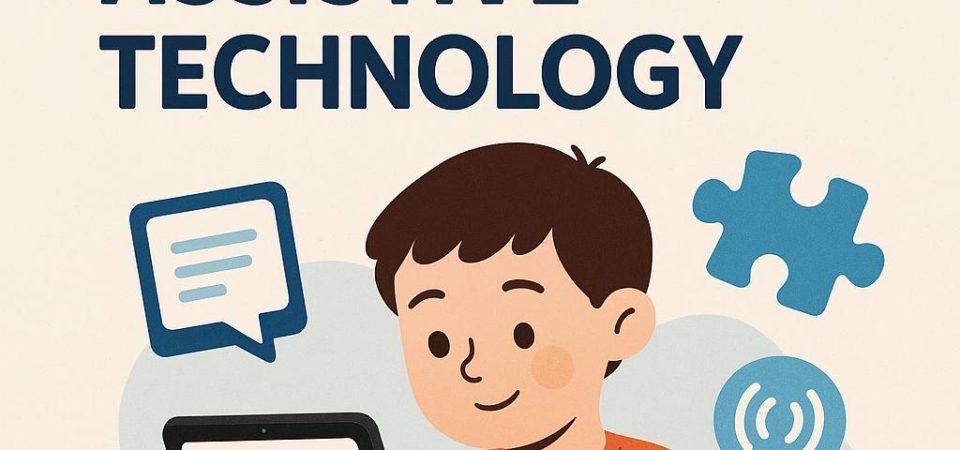Understanding Autism and Assistive Technology
Autism Spectrum Disorder (ASD) is a multifaceted developmental condition that presents numerous challenges in areas such as social skills, repetitive behaviors, and communication. Each individual with autism experiences the condition uniquely, which means that personalized approaches to support and intervention are essential. Assistive technology has emerged as a pivotal tool in enhancing the quality of life and learning experiences for individuals on the autism spectrum.
What is Assistive Technology?
Assistive technology (AT) consists of a broad array of devices, software, and products that aid individuals in performing tasks they might otherwise find challenging or impossible. In the context of autism, AT has proven to be instrumental in facilitating key areas such as communication, learning, and social interaction, and in managing daily routines effectively.
Common Assistive Technology Tools for Autism
Several tools and devices have been specifically designed to meet the unique needs of individuals with autism. Here are some noteworthy examples:
Communication Devices: One of the primary challenges for many individuals with autism is communication. Devices like speech-generating tools have revolutionized how non-verbal individuals or those with substantial speech difficulties can communicate. Examples such as DynaVox and specialized applications like Proloquo2Go provide a platform for users to express needs, thoughts, and emotions effectively and independently.
Visual Schedules: A significant number of individuals with autism benefit from visual representations of their daily routines to better understand and organize their activities. Tools like the Pictello app create picture stories that outline these routines with clarity, setting clear expectations for the day ahead and consequently reducing anxiety related to unpredictability.
Sensory Tools: Many people with autism have sensory sensitivities, wherein environmental stimuli can become overwhelming. Products such as noise-canceling headphones, weighted blankets, and fidget toys serve as sensory tools that help manage these sensitivities by providing calming influences and reducing overstimulation.
Learning Apps: The rise of educational technology has led to the development of apps specifically tailored to the learning needs of those with autism. Applications like Autismate or Learn with Rufus offer interactive learning experiences that focus on crucial developmental areas such as language acquisition, social skills, and cognitive development.
The Role of Assistive Technology in Education
In the realm of education, assistive technology can substantially expand the learning opportunities available to students with autism. Teachers and therapists leverage AT to craft educational experiences that are closely aligned with the unique needs and learning styles of each student. The integration of technology in the classroom leads to more engaging, interactive, and accessible learning environments, promoting increased levels of participation and achievement among students on the autism spectrum.
Considerations When Choosing Assistive Technology
Several key factors influence the selection of appropriate assistive technology. The decision-making process should consider:
User Preferences: It is crucial to take into account the preferences of the individual who will be using the assistive technology. Involving them in the selection process ensures better acceptance and utilization of the technology.
Cost and Accessibility: The financial implications and availability of devices play a significant role in the decision-making process. Various resources, such as grants, funding opportunities, or school-based programs, might be accessible to help mitigate some of these costs.
Customization and Flexibility: It is essential to select technology that can be customized to fit specific individual needs and that can be adapted as those needs change over time.
Training and Support: The successful implementation of assistive technology relies heavily on comprehensive training for users, caregivers, educators, and family members. Ensuring that everyone involved is well-versed in the utilization of the technology is crucial for its efficacy.
Learn more about assistive technology resources for autism at Autism Speaks.
Assistive technology shows immense promise in supporting individuals with autism by enhancing their independence and optimizing their capabilities in communication, learning, and interaction. Through thoughtful selection and effective implementation of these technological tools, we can significantly improve the lives of those on the autism spectrum.
As society continues to embrace technological innovations aimed at supporting individuals on the autism spectrum, it is essential to maintain a focus on personalization and adaptability. The varied nature of autism means that one-size-fits-all solutions are often inadequate. Instead, each assistive technology adoption should be treated as a unique case, carefully considering the individual’s particular strengths, challenges, and preferences.
In educational settings, the inclusion of assistive technology serves to bridge the gap between traditional teaching methodologies and the diverse needs of autistic students. By employing technology, educators can provide tailored support and create learning environments that resonate with and motivate students, leading to improved educational outcomes.
Furthermore, it’s important for developers of assistive technology to maintain collaboration with autism experts and educators to continuously refine and adapt their products. Understanding the feedback and lived experiences of those on the autism spectrum is invaluable in creating more effective and user-friendly solutions.
Research and innovation in assistive technology continue to thrive, with new and improved tools emerging regularly. This evolution promises not only to enhance the immediate quality of life for individuals with autism but also to offer longer-term benefits in terms of educational attainment and social inclusion. Embracing these advancements with a thoughtful and targeted approach will ensure that people with autism are equipped with the necessary tools to navigate a complex world with greater ease and confidence.
